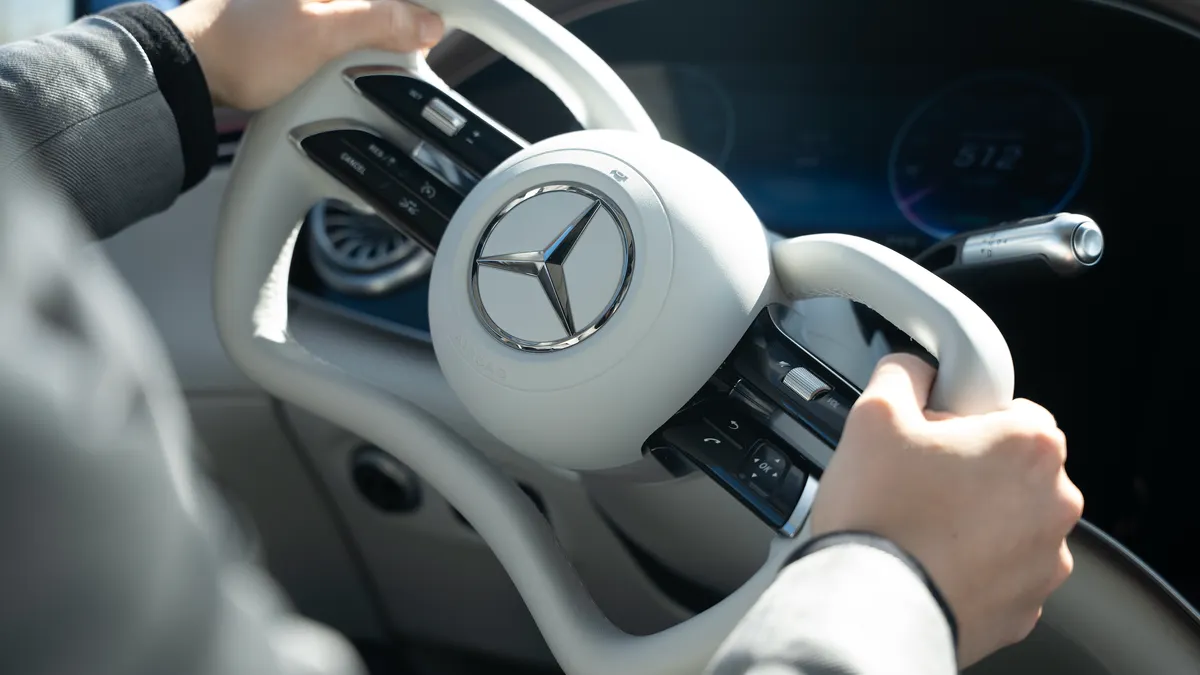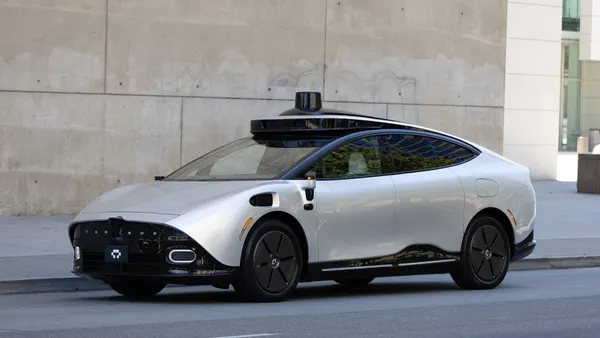Dive Brief:
- Mercedes-Benz has developed a new steer-by-wire system that will debut in production vehicles in 2026, the company announced in an April 22 press release. The automaker says it will be the first German OEM to offer the technology when it launches next year.
- Steer-by-wire systems eliminate the mechanical connection between the steering column and the steering gear, with all driver inputs transmitted electronically. It can also be used in vehicles with rear-wheel steering assist.
- “Steer-by-wire is another big step towards the mobility of tomorrow, and we’re proud that we will be launching such a system in 2026,” said Markus Schäfer, Mercedes-Benz CTO of development and procurement, in the release. “The technology enables a unique customer experience that goes far beyond steering alone.”
Dive Insight:
The electronically controlled system will redefine the steering feel for drivers, according to Mercedes-Benz. Depending on the driving speed and situation, an actuator on the steering wheel sends the driver's input to the vehicle’s steering unit, which turns the wheels as needed.
Steer-by-wire systems can also simplify parallel parking for drivers by reducing the steering wheel rotation needed for tight maneuvers compared to conventional systems. Tesla offers similar technology on the Cybertruck that gives the vehicle a tighter turning radius using four-wheel steering.
The new steer-by-wire system can also improve a vehicle’s directional stability and lateral agility in various driving scenarios, according to Mercedes-Benz. For example, excessive steering wheel vibrations caused by an uneven road surface that’s typically transmitted to the driver with a conventional steering setup can now be almost completely avoided, according to the release.
The suspension specialists at Mercedes-Benz can also tailor the steering ratio and adapt it for performance vehicles, offering drivers a more sporty steering feel. Drivers can also make steering adjustments based on their personal preferences.
Mercedes-Benz says vehicles equipped with its steer-by-wire system will also use a flatter steering wheel, providing engineers with greater flexibility to design vehicle interiors to improve drivers’ view of the instrument cluster. In the future, drivers may be able to use the steer-by-wire system for immersive gaming while the vehicle is stationary.
The automaker says it completed over one million kilometers of simulated driving in both bench tests and proving grounds for its steer-by-wire system. For added safety, it features a fully redundant system architecture for its sensors, high-performance control units, power supply and onboard data to prevent any single point of failure. However, in the event of a system-wide failure, the vehicle’s Electronic Stability Program will initiate rear-axle steering and wheel-specific braking interventions.
As a pioneer of advanced safety technology, Mercedes-Benz launched a brake-by-wire system for E-Class and CLS models over 20 years ago called “Sensotronic Brake Control.” It eliminated the mechanical link between the pedal and the vehicle’s hydraulic brakes by using an actuator on the brake calipers to provide precise stopping force electronically.
However, various problems with its operation led to two U.S. safety recalls in October 2004 and August 2005. In late 2005, the automaker announced it would no longer offer the feature and reverted back to its conventional braking system for model year 2006 vehicles.














